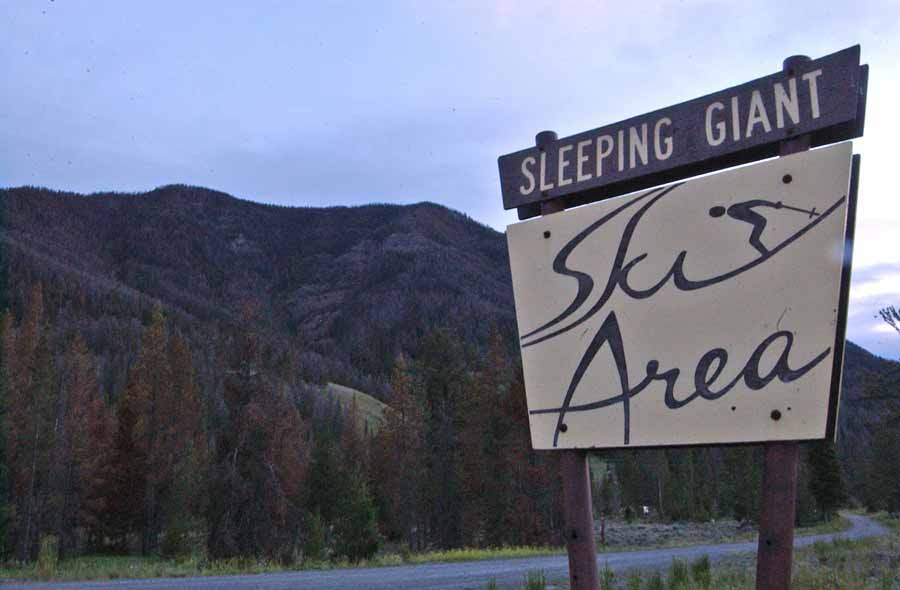
Managers of the Sleeping Giant Ski Area east of Yellowstone National Park have proposed installing a zip line for summer use. (Ruffin Prevost/Yellowstone Gate - click to enlarge)
By Ruffin Prevost
CODY, WYO. — A plan by a nonprofit group to build a zip line in the Shoshone National Forest just east of Yellowstone National Park would not create a significant environmental impact, according to a report released Monday by the U.S. Forest Service.
A 102-page Environmental Assessment conducted by the Forest Service and paid for by the Yellowstone Recreation Foundation states that the group’s plan “would not significantly impact any resource area or issue raised during scoping.”
Based on the report’s findings and additional public comment, Shoshone Forest Supervisor Joe Alexander will make a decision about the project later this year.
“We’re pleased with the findings of the environmental assessment and hopefully we can move forward with the Shoshone National Forest and other agencies and groups on this project,” said Bryant Hall, a foundation board member. “We think the zip line is something that is going to help us achieve long-term financial sustainability.”
The Foundation owns and operates the historic Sleeping Giant Ski Area, a small, family-oriented ski hill located less than five miles from Yellowstone’s East Gate. The group is hoping a zip line — a cable suspended above the forest floor that riders glide along on a harness and pulley — will bring additional summer revenue to help Sleeping Giant’s financially struggling ski operations.
The zip line would require eight towers to support the line as it moves over about 19 acres, with a footprint on the ground of about 800 square feet, according to the report.
Plans also call for installing a donated cabin for use by a caretaker that would comply with a previously approved environmental analysis completed in 2007, as well as creating a small area on the west side of the ski hill for winter sledders and tubers. The tubing hill would require expanded snowmaking and installation of a rope tow.
Earlier ideas about installing an alpine slide or mountain biking trails on the mountain were not included in the proposed plan.
The Foundation is working to revitalize winter recreation along the North Fork Valley between Cody, Wyo. and Yellowstone Park, focusing on downhill and cross-country skiing, snowmobiling and ice hockey in Cody.
Initial cost estimates for the zip line are around $500,000, and the project could potentially be completed by late summer 2013 or spring 2014.
There were many public comments in support of the plan. But public comments from some environmental groups local residents listed in the report focused on concerns about the project’s effects on wildlife, especially grizzly bears, as well as the financial viability of the ski hill and the zip line.
The North Fork Valley is home to one of the largest concentrations of grizzly bears in America outside of Alaska. Some comments in the study focused on how the zip line might either drive bears out of the area during the summer or habituate them to human activity.
The report states that there were 74 grizzly-human conflicts recorded in the front country along the North Fork Valley over the past 11 years. Most of those were in developed areas, and many were related to improper food storage or involved previously food-conditioned bears that had conflicts at other sites.
Most grizzlies in the area rely on natural food sources there during the spring, and have adapted to human presence by avoiding landscapes around developed areas except at night and around sunrise and sunset.
Contact Ruffin Prevost at 307-213-9818 or ruffin@yellowstonegate.com.
